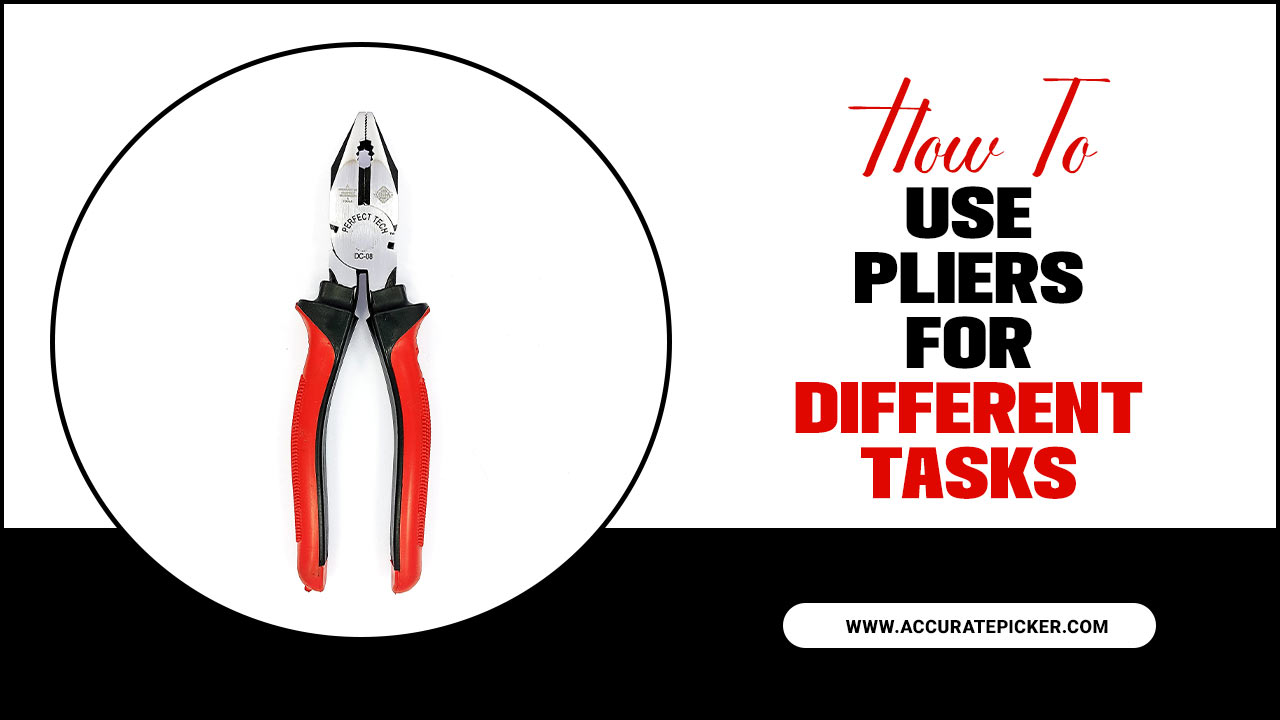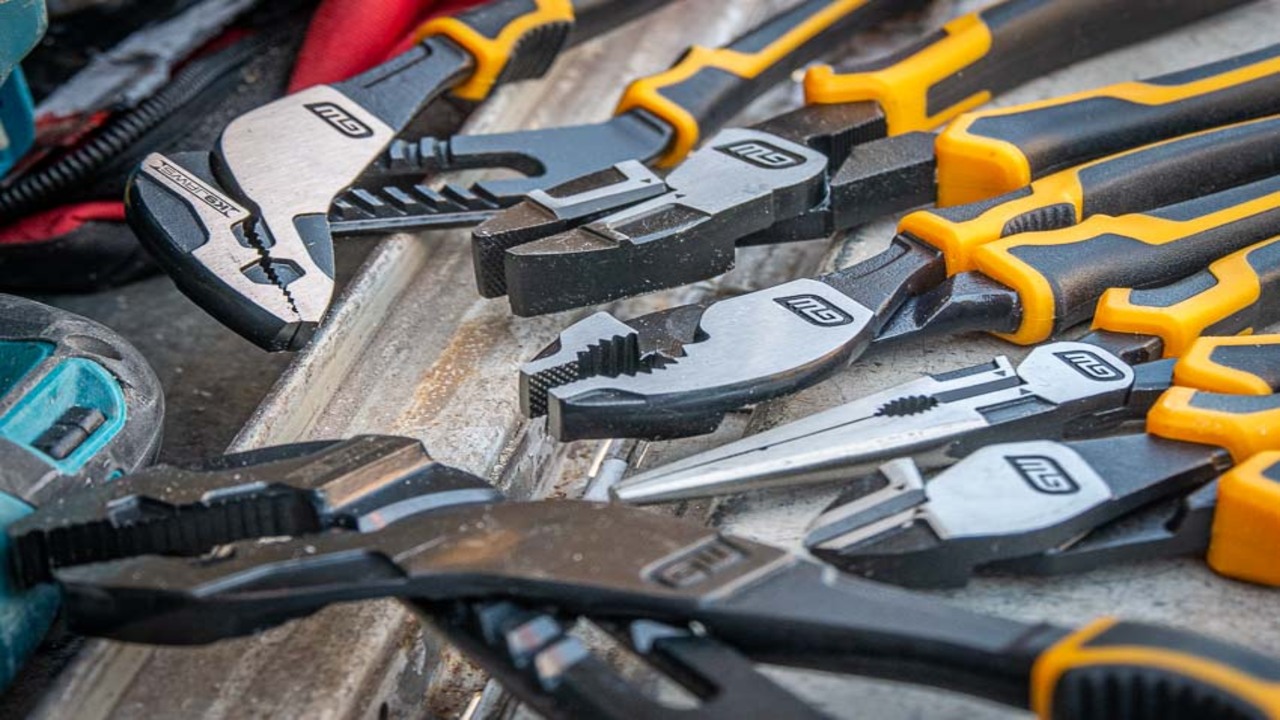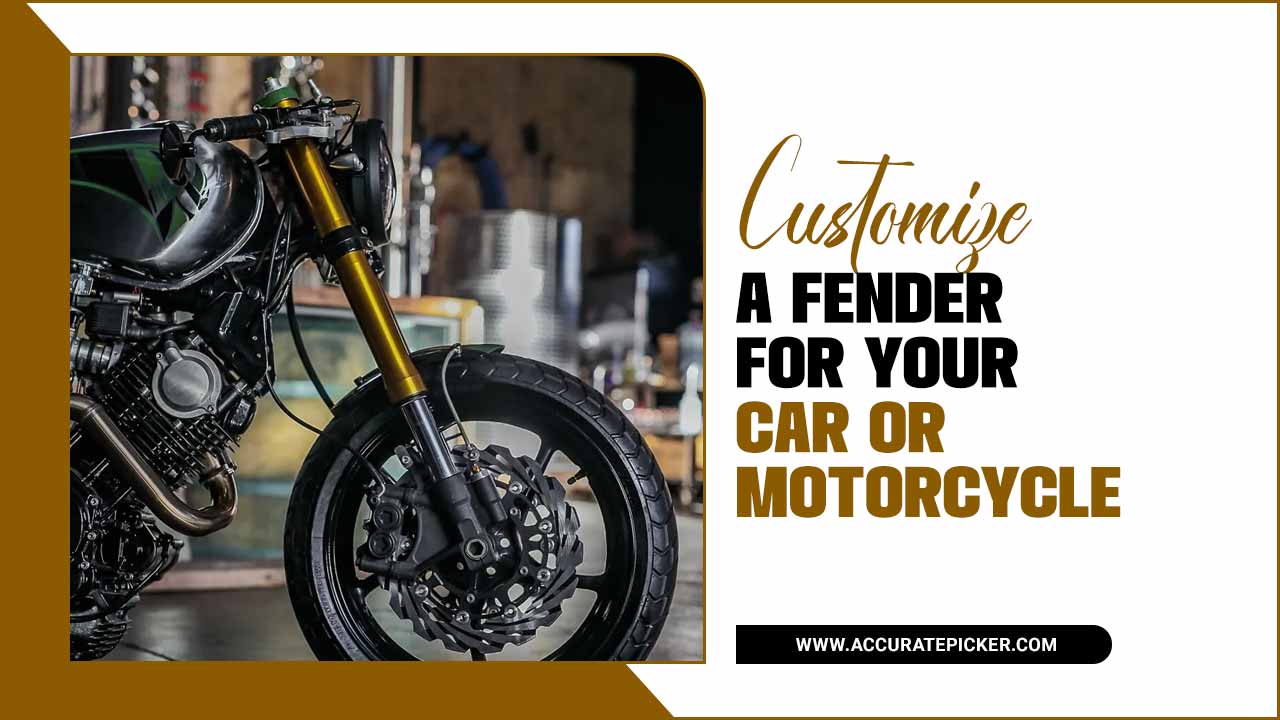Pliers are one of the most versatile tools in any toolbox. They are used in a variety of tasks, from gripping and twisting to cutting and bending.
They are an essential part of any toolkit and are especially useful for working with wires, screws, and other small parts. In this article, we’ll explore how to use pliers for various tasks, from the basics of gripping and twisting to more specialized tasks like cutting and bending.
We’ll also discuss how to choose the right pliers for the job and how to maintain them for long-term use. With the right knowledge and tools, you can tackle any project with confidence. So, read on to learn how to use pliers for various tasks.

Using Pliers For Different Tasks

Pliers are an essential tool for any toolbox. They can be used for a variety of tasks, from gripping, bending, and cutting metal and wire to removing nails and other fasteners. In this article, we will discuss how to use pliers for various tasks, including how to select the right type of pliers, how to use them safely, and how to care for them.
We will also provide tips on how to get the most out of your pliers. By the end of this article, you will have a better understanding of how to use pliers for various tasks.
Types Of Pliers

Pliers are a versatile tool that can be used for many tasks. They come in a variety of shapes and sizes and can be used for gripping, cutting and bending metal. The most common types of pliers are slip joint, needle nose, diagonal, locking, lineman’s, and flat nose pliers. Slip joint pliers are commonly used for gripping and turning objects.
Needle nose pliers have a long, narrow nose that can be used to bend and cut wires. Diagonal pliers have small angled blades and are used to cut wires and other materials. Locking pliers have a locking mechanism that allows them to hold the object securely.
Lineman’s pliers have a serrated edge and are used for gripping and cutting wire. Finally, flat nose pliers have a flat, wide nose and are used for gripping and turning objects. Pliers are an essential part of any toolbox and can be used for a variety of tasks.
Slipjoint Pliers
Slipjoint pliers are an essential tool for any home or professional workshop. The main advantage of slipjoint pliers is that they are adjustable and can be opened wide enough to accommodate large objects. Additionally, they are designed to remain adjustable until the object is removed, providing a secure grip.
Slipjoint pliers are commonly used for gripping, compressing, and bending tasks. Because of their adjustable jaws, they can also be used to hold objects in place while tightening fasteners or cutting objects. They are available in a range of sizes and handle materials, making them suitable for a variety of tasks. Slipjoint pliers are an invaluable tool for any handyman, and should be kept in any toolbox.
Needlenose Pliers
Needlenose pliers are a useful tool to have on hand for a variety of tasks. They are ideal for holding small items, reaching into tight spaces, gripping and twisting wires, and bending metal. You can use them to cut through wire, remove staples, and even hold tiny screws and nails. The pointed tip of the pliers allows them to reach into narrow areas, while the long handles provide extra leverage when applying force.
To use needlenose pliers, grip the object between the two jaws and apply pressure. Make sure the item is secure in the jaws and won’t slip out. If you are twisting wires, make sure to twist in the same direction as the handles.
When bending metal, be sure to use slow and steady pressure to avoid overextending the metal. Needlenose pliers are an essential tool for any handyman or crafter and are great for tackling small jobs around the house.
Combination Pliers
Combination pliers are a versatile tool that can be used for a variety of tasks. They have two tapered jaws, one flat and one serrated, and a cutting blade for wire. Combination pliers are very similar to a pair of slip-joint pliers, except that they have an additional cutting blade for cutting through wire and other materials.
These pliers are great for gripping, bending, and twisting metal, as well as for cutting through wire. They can also be used to grip and hold objects tightly. Combination pliers are great for working with electrical wiring, and they are often used to twist and turn screws in tight spaces. They are also great for cutting through thin wire and other materials.
Combination pliers are an essential tool for anyone who works with metal or electrical wiring, and they are a great addition to any tool box.
Lineman’S Pliers
Lineman’s Pliers are a versatile tool and can be used for a variety of tasks. They are typically made of steel with a hardened cutting edge, and can be used to cut wire, strip insulation, pinch sheet metal, and even crimp electrical connectors. They are also great for gripping, twisting, and turning items such as nuts and bolts. Lineman’s Pliers are an essential tool for any electrician, and are often used in home repair and maintenance.
To use them properly, make sure you are wearing protective equipment such as safety glasses and gloves. Also, ensure that the jaws of the pliers are tight and secure before beginning any task. Finally, when cutting wire, be sure to use a cutting action instead of a pulling motion, as this will create a cleaner cut.
With the right care and usage, Lineman’s Pliers will be a valuable asset in any toolbox.
Gripping And Twisting

Pliers are a versatile tool that can be used for a variety of tasks. Gripping and twisting are two of the basic actions that pliers can perform. To grip, hold the pliers firmly in one hand and place the jaws around the object you are trying to grip. Squeeze the handles together to secure the item.
To twist, grasp the pliers in one hand and use the handles to turn the object. You can use pliers to twist wires, turn screws, and hold small parts in place while you are working. Pliers can also be used to bend metal, form shapes, and even cut through certain materials like glass. With the right tools and a bit of practice, pliers can help you accomplish a variety of tasks.
Gripping Round Objects
Gripping round objects with pliers can be tricky. The most efficient way is to ensure that the jaws of the pliers are exactly perpendicular to the surface of the object. This will provide the most secure hold and allow for finer control when manipulating the object. When using pliers, you will also want to be careful not to apply too much pressure.
This can cause the pliers to slip or damage the object. It is also important to select the right size of pliers for your task. Pliers with too wide of a jaw may not securely grip your object, while pliers with too small of a jaw won’t allow you to manipulate the object effectively.
Once you have the right size of pliers, you can use them for a variety of tasks, such as bending, twisting, and cutting. Pliers are also useful for grasping and holding small objects. Whether you are working on a craft project, repairing electronics, or performing other tasks, pliers can be a valuable tool.
Loosening Nuts And Bolts
Pliers are an essential tool to have around the home and in the garage. They can be used for a variety of tasks, including loosening nuts and bolts. To loosen a nut or bolt with pliers, you should first check to see if it’s rusted or stuck. If it is, use some penetrating oil or a rust remover to loosen it up.
Once the nut or bolt is free, use the pliers to turn it counterclockwise. If necessary, use a wrench or other tool to brace the nut or bolt while you turn it with the pliers. Alternatively, you can use a pair of locking pliers to grab and turn the nut or bolt.
This is especially useful for very stubborn nuts and bolts. Whatever method you use, make sure you are wearing gloves and safety glasses to protect yourself from any sharp edges. With the right tools and a bit of know-how, loosening nuts and bolts with pliers is a simple and effective job.
Cutting Wire
Cutting wires with pliers is a common task that comes up in many situations. Pliers have a wide range of uses, and they are often used to cut wires of different materials and thicknesses. When using pliers to cut wires, it is important to choose the correct tool for the job. Different types of pliers are designed to handle different types of materials, so it is important to select the right type of pliers for the job.
When cutting wires, it is important to ensure that the pliers are sharp and in good condition. Dull pliers can cause the wire to bend and break, leading to an uneven cut. Additionally, it is important to keep in mind the type of material being cut and the thickness of the wire.
Thicker wires require more force to cut, and using the wrong type of pliers can make the job even more difficult. To avoid any issues, it is best to use the right type of pliers for the job.
Bending Wire
Bending wire with pliers can be used for a variety of tasks. Pliers can be used to bend or shape wire into various shapes and sizes. The pliers can be used to create a tight or loose bend in the wire, depending on the application. It can also be used to create loops, curves, or other shapes.
To begin, make sure that the wire is in the correct orientation to be bent. Once the wire is in place, use the pliers to grasp the wire and bend it to the desired shape. It is important to be gentle when bending the wire, as it is easy to break.
If the wire does break, start over with a new piece of wire. Bending the wire too sharply can cause it to break, so make sure to make small, gradual bends. When finished, the wire should be in the desired shape.
Safety Precautions

When using pliers to complete various tasks, it is important to take safety precautions to protect yourself and your property. Always wear safety glasses and gloves when using pliers to protect your eyes and skin from any potential sparks or debris. Additionally, inspect your pliers for signs of wear and tear before each use, as worn tools can be hazardous and cause injury. When using pliers, use enough force to get the job done, but don’t overdo it.
Excessive force can cause the pliers to slip and potentially cause injury. Be sure to use pliers in a secure, well-lit area to avoid any potential accidents. Finally, never use pliers to cut metal wires or cables, as this can cause them to fray and create a dangerous situation.
By following these simple safety precautions, you can ensure that you and your property remain safe while using pliers.
Eye Protection
Eye protection is essential when using pliers. Whenever you use pliers, make sure you are wearing goggles or safety glasses to protect your eyes from flying debris. Before starting any task, inspect the pliers to make sure they are in good working order.
Replace any broken or worn-out parts before attempting to use them. Additionally, use caution when working with pliers and always ensure that your hands and the area around you are free of any obstructions. It is also important to use the right type of pliers for the job.
For instance, if you are cutting something, use a pair of cutting pliers instead of a pair of needle-nose pliers. Utilizing the appropriate pliers for the job will help you complete the job safely and efficiently.
Gloves
When it comes to using pliers, gloves are a must. Not only do they provide protection from being pinched or cut by sharp edges, but they also keep your hands clean and free of grease and dirt. Gloves can be made from a variety of materials, such as leather, latex, or nitrile.
Leather gloves offer the most protection and will last longer, while latex or nitrile gloves tend to be less expensive and more disposable. When selecting gloves, make sure they fit snugly and are comfortable to wear. For maximum protection, choose gloves with a textured grip that will provide extra grip on the pliers.
Proper Fitting
Having a pair of pliers that fit properly in your hand is essential when you’re tackling any task. Pliers that are too big or too small are difficult to use, and can be dangerous. To ensure proper fitting, you should measure the distance between your thumb and index finger. This will give you an idea of the size of pliers you should be looking for.
When you’re at the store, make sure to try out a few different pairs. You should be able to find a pair that fits comfortably in your hand and allows you to easily manipulate whatever you’re working on. If you’re using pliers for a specific task, you may want to look for ones with special features that will make it easier.
For example, if you’re working on a project that requires a lot of bending, you may want to look for a pair of pliers with a compound joint. This will allow you to make smoother bends and get the job done quickly. Proper fitting is essential when it comes to using pliers, so make sure to take the time to find the right pair for the job.
Avoid Overheating
When using pliers for tasks around the house, it is important to keep in mind the risk of overheating. If pliers become too hot, they can become difficult to handle and even cause injury. To avoid this, take regular breaks while working with pliers. Use a damp cloth to keep them cool, and never touch them with bare hands.
Additionally, use pliers that are the right size for the job. Pliers that are too small can quickly become overheated. Finally, be sure to use pliers with insulated handles to help protect your hands from the heat.
By following these simple steps, you can easily use pliers for a variety of tasks without worrying about overheating.
Conclusion
Pliers are a versatile tool used for gripping, cutting, bending, and twisting. They are a must-have for any toolbox and can be used in a variety of tasks. Pliers can be used to twist wire, hold small objects, cut objects, and bend metal. They are also great for removing small nails and screws.
With a little practice, pliers can be used for a variety of projects around the home and workshop.
FAQ’s
1.What Types Of Pliers Are Available?
Ans: There are a variety of different types of pliers available, including flat nose, needle nose, end-cutting, and lineman’s pliers. Flat nose pliers have a flat gripping surface and are used for gripping and bending. Needle nose pliers have a narrow profile and long jaws for reaching into tight spaces. End-cutting pliers are used for cutting and trimming wire. Lineman’s pliers are designed for gripping, cutting, and twisting wire.
2.What Is The Best Way To Use Pliers For Precision Tasks?
Ans: The best way to use pliers for precision tasks is to choose the correct type of pliers for the job, use a steady grip, take your time, and use a light touch. Different types of pliers are designed for different types of jobs, so selecting the right type of pliers for the task is important.
A steady grip on the pliers will help to keep them from slipping while in use. Taking your time and working slowly will help to ensure accuracy. Lastly, it is important to use a light touch when using pliers for precision tasks to avoid damaging delicate components.
3.What Safety Precautions Should Be Taken When Using Pliers?
Ans: When using pliers, make sure to always wear protective eye gear. Keep your hands away from any moving parts of the pliers. Make sure to use a firm grip on the handle of the pliers, and keep your fingers away from the jaws of the pliers. Additionally, inspect the pliers before each use to make sure that no damage has occurred.
4.What Is The Difference Between Pliers And Wire Cutters?
Ans: Pliers are hand tools used to grip and hold objects, while wire cutters are specifically designed to cut through wire. Pliers typically have two flat and curved surfaces, while wire cutters have a series of angled blades. Pliers are usually used to bend, twist, and grip objects, while wire cutters are used to snip, cut, and trim wire. Both tools are designed for different purposes, but both are commonly used in DIY projects.
5.Are There Certain Types Of Pliers That Are Better Suited For Certain Tasks?
Ans: Yes, there are certain types of pliers that are better suited for certain tasks. For instance, needle-nose pliers are great for reaching into tight places, while slip-joint pliers are good for gripping and turning nuts and bolts. Flat-nose pliers are great for gripping and bending small wire, while lineman’s pliers are good for cutting wire and gripping large objects. Finally, diagonal pliers are good for cutting small wires.





